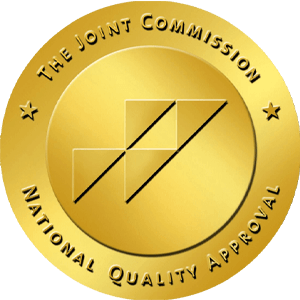Borderline Personality Disorder (BPD) is a serious mental illness marked by unstable relationships, and behavior. BPD is also one of the most misunderstood mental illnesses. Many people with BPD are inaccurately labeled as “manipulative,” “attention-seeking,” or “crazy.” This is because BPD symptoms can be dramatic and sometimes appear to be intentional. If you or someone you love is struggling with borderline personality disorder (BPD), it’s important to know that there are borderline treatment options available. While the prognosis for BPD is better than for other mental disorders, like depression and bipolar disorder, it’s still a serious condition that requires professional help.
What Causes Borderline Personality Disorder?
There is no single cause of borderline personality disorder (BPD). Instead, it is thought to be caused by a combination of genetic and environmental factors. Research suggests that BPD may be hereditary, meaning it can run in families. However, not everyone with a family member who has BPD will develop the disorder themselves. Other factors, such as childhood trauma or abuse, may also play a role in the development of BPD.
There is still much to learn about the genetic underpinnings of borderline personality disorder (BPD). However, researchers have identified some genes that may contribute to its development. Some of these genes are involved in regulating emotion and stress responses. This suggests that BPD may be caused, in part by a combination of environmental and genetic factors.
Borderline personality disorder can also be caused by environmental factors. The person’s home life, family dynamics, and relationships can all contribute to the development of BPD. For example, if a person grows up in an abusive or neglected home, they may be more likely to develop BPD. Childhood trauma is also thought to be a major contributing factor to borderline personality disorder (BPD). Traumatic experiences, such as abuse, neglect, or abandonment, can lead to lasting changes in the brain and body if a person doesn’t receive the appropriate support and borderline treatment. If left untreated then symptoms can worsen rapidly.
While there is no single cause for BPD, there are ways to identify the disorder. The symptoms of borderline personality disorder can be dramatic and sometimes appear to be intentional. This can make it difficult for people who don’t understand the disorder to see that it is a real mental illness. However, borderline personality disorder is a real and serious mental illness.
What Are the Symptoms of Borderline Personality Disorder?
The symptoms of BPD can be vary person to person, and sometimes appear to overlap with other mental disorders. However, when you identify with several symptoms at the same time that are related to borderline personality disorder, there is a possibility BPD is the what stems those issues. The nine symptoms of borderline personality disorder, as defined by the Diagnostic and Statistical Manual of Mental Disorders (DSM-5) are:
- A fear of abandonment
- Unstable relationships
- Intense mood swings
- Impulsive behavior
- Self-harm
- Suicidal thoughts or behaviors
- Feelings of emptiness
- Anger issues
- Chronic feelings of worthlessness or guilt
If you have borderline personality disorder (BPD), you may experience some or all of these symptoms. These symptoms can make everyday activities, like going to work or school, difficult to manage. They can also disrupt your relationships and make it hard to maintain healthy, supportive friendships or romantic partnerships.
Unstable relationships: People with BPD often have unstable or intense relationships. Their feelings towards others can change quickly and dramatically. They may idealize someone one moment and then feel angry and disappointed with that same person the next.
Fear of abandonment: People with BPD are often afraid of being abandoned or left alone. This fear can lead to clingy or needy behavior. It can also make it hard for them to end a relationship, even if it’s an unhealthy one.
Impulsiveness: People with BPD may act impulsively or recklessly in areas like sex, spending money, substance abuse, or driving. This behavior may be a way of coping with overwhelming emotions or feelings of emptiness.
Self-harm: People with BPD may engage in self-harming behaviors, such as cutting or burning themselves. This behavior may be a way of coping with difficult emotions or relieving feelings of emptiness.
Suicidal thoughts or behaviors: People with BPD may have suicidal thoughts or make suicide attempts. This is often a result of feeling hopeless or overwhelmed by their emotions.
If you or someone you know is experiencing these symptoms, it’s important to seek professional help. Borderline personality disorder is a serious mental illness that requires treatment. While there is no cure for BPD, there are effective treatments that can help manage the symptoms and improve the person’s quality of life.
What Are Some Treatment Options for BPD?
Borderline personality disorder is a serious mental illness that can have devastating effects on the lives of those who suffer from it. However, borderline personality disorder is also a highly treatable condition. With the right treatment, most people with BPD can learn to manage their symptoms and live healthy, productive lives. Therefore, it is important to seek Borderline treatment options if you or someone you know is affected by it.
There are a variety of different treatment options available for borderline personality disorder. Some of the most common and effective treatments include:
Cognitive-behavioral therapy (CBT): CBT is a type of therapy that helps people learn to identify and change negative thinking patterns and behaviors. This can be an effective treatment for borderline personality disorder, as it can help people learn to manage their emotions and impulsivity.
Dialectical behavior therapy (DBT): DBT is a type of therapy that focuses on helping people understand and accept their emotions. This can be an effective treatment for borderline personality disorder, as it can help people learn to cope with difficult emotions in a healthy way.
Therapy: Therapy can be an effective Borderline Personality Disorder treatment. Different types of therapy, such as combined cognitive behavioral therapy (CBT) or dialectical behavior therapy (DBT), can help people with BPD manage their symptoms.
Support groups: Support groups provide a space for people with BPD to share their experiences and connect with others who understand what they’re going through.
If you or someone you know is living with borderline personality disorder, it’s important to seek professional help. Borderline treatment can make a big difference in managing the symptoms and improving the person’s quality of life. Omega Recovery offers a variety of different treatment options for borderline personality disorder. Get in touch with us today to learn more about our borderline personality disorder treatment programs.







